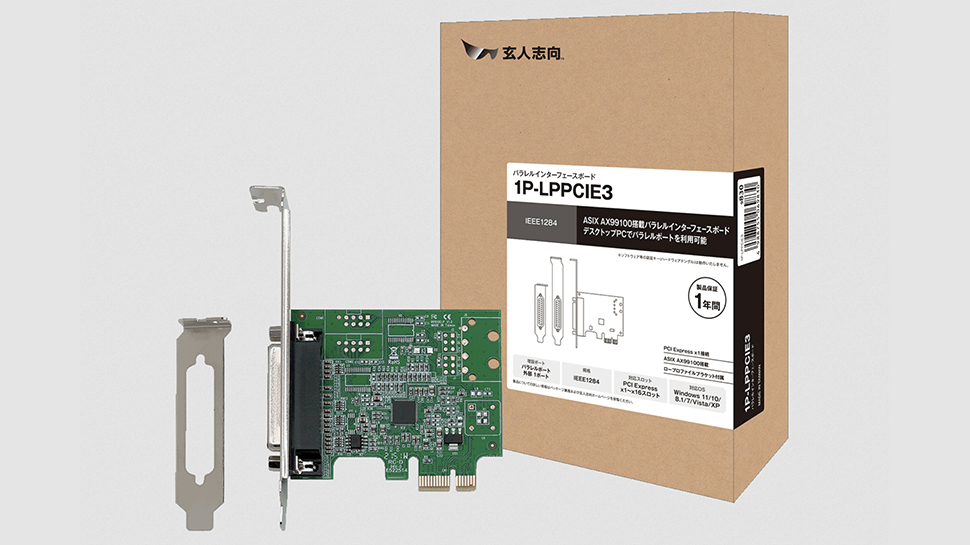
In what must be one of the more unusual PCIe cards we’ve seen recently, Japanese company Kuroutoshikou has introduced a PCI Express adapter that adds an antiquated parallel port to modern PCs.
Named the 1P-LPPCIE3, this device allows users to connect older parallel port devices, such as legacy printers, through a PCIe x1 slot.
Despite its vintage functionality, the card is surprisingly compatible with a range of Windows operating systems, from Windows XP up to Windows 11.
Insert the CD-ROM
Spotted by PC Watch, the 1P-LPPCIE3 is equipped with the ASIX AX99100 chipset and features a single external D-sub 25-pin female port (IEEE 1284) for parallel connections - a common standard for older printers like the HP LaserJet series and various dot matrix models. It has dimensions of 82 x 67 x 14 mm and weighs approximately 70 grams.
While PCIe cards are generally associated with high-speed data transfer and advanced capabilities, the 1P-LPPCIE3 stands out by reviving a nearly obsolete standard. For those who’ve held onto an old printer in the loft for two decades, this PCIe card might be the perfect excuse to finally dust it off - just don’t be surprised if the ink has long since dried up.
The driver for the card comes on a CD-ROM - a nostalgic throwback to an era when software was commonly distributed this way. For users who don’t have an optical drive, which is pretty much everybody now, drivers can also be downloaded from the manufacturer’s website.
The card is on sale now, with an expected retail price of around 4,000 yen (approximately $27). The package includes a low-profile bracket, making it suitable for slimline PCs, and the device comes with a one-year warranty.
We can’t imagine the 1P-LPPCIE3 becoming a best seller, but Kuroutoshikou clearly believes there is enough demand in Japan for a card that bridges the gap between modern and legacy tech, likely in industrial or niche applications that still rely on older hardware.







